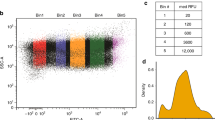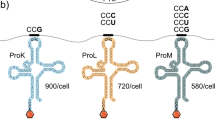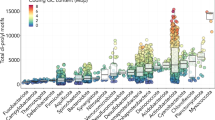Abstract
The choice of codons can influence local translation kinetics during protein synthesis. Whether codon preference is linked to cotranslational regulation of polypeptide folding remains unclear. Here, we derive a revised translational efficiency scale that incorporates the competition between tRNA supply and demand. Applying this scale to ten closely related yeast species, we uncover the evolutionary conservation of codon optimality in eukaryotes. This analysis reveals universal patterns of conserved optimal and nonoptimal codons, often in clusters, which associate with the secondary structure of the translated polypeptides independent of the levels of expression. Our analysis suggests an evolved function for codon optimality in regulating the rhythm of elongation to facilitate cotranslational polypeptide folding, beyond its previously proposed role of adapting to the cost of expression. These findings establish how mRNA sequences are generally under selection to optimize the cotranslational folding of corresponding polypeptides.
This is a preview of subscription content, access via your institution
Access options
Subscribe to this journal
Receive 12 print issues and online access
$189.00 per year
only $15.75 per issue
Buy this article
- Purchase on Springer Link
- Instant access to full article PDF
Prices may be subject to local taxes which are calculated during checkout






Similar content being viewed by others
References
Gingold, H. & Pilpel, Y. Determinants of translation efficiency and accuracy. Mol. Syst. Biol. 7, 481 (2011).
Akashi, H. Synonymous codon usage in Drosophila melanogaster: natural selection and translational accuracy. Genetics 136, 927–935 (1994).
Drummond, D.A. & Wilke, C.O. Mistranslation-induced protein misfolding as a dominant constraint on coding-sequence evolution. Cell 134, 341–352 (2008).
Cabrita, L.D., Dobson, C.M. & Christodoulou, J. Protein folding on the ribosome. Curr. Opin. Struct. Biol. 20, 33–45 (2010).
Thanaraj, T.A. & Argos, P. Ribosome-mediated translational pause and protein domain organization. Protein Sci. 5, 1594–1612 (1996).
Zhang, F., Saha, S., Shabalina, S.A. & Kashina, A. Differential arginylation of actin isoforms is regulated by coding sequence–dependent degradation. Science 329, 1534–1537 (2010).
Zhang, G., Hubalewska, M. & Ignatova, Z. Transient ribosomal attenuation coordinates protein synthesis and co-translational folding. Nat. Struct. Mol. Biol. 16, 274–280 (2009).
Kimchi-Sarfaty, C. et al. A “silent” polymorphism in the MDR1 gene changes substrate specificity. Science 315, 525–528 (2007).
Plotkin, J.B. & Kudla, G. Synonymous but not the same: the causes and consequences of codon bias. Nat. Rev. Genet. 12, 32–42 (2011).
Kramer, G., Boehringer, D., Ban, N. & Bukau, B. The ribosome as a platform for co-translational processing, folding and targeting of newly synthesized proteins. Nat. Struct. Mol. Biol. 16, 589–597 (2009).
Wilson, D.N. & Beckmann, R. The ribosomal tunnel as a functional environment for nascent polypeptide folding and translational stalling. Curr. Opin. Struct. Biol. 21, 274–282 (2011).
Komar, A.A. A pause for thought along the co-translational folding pathway. Trends Biochem. Sci. 34, 16–24 (2009).
Warnecke, T. & Hurst, L.D. GroEL dependency affects codon usage–support for a critical role of misfolding in gene evolution. Mol. Syst. Biol. 6, 340 (2010).
Brunak, S. & Engelbrecht, J. Protein structure and the sequential structure of mRNA: α-helix and β-sheet signals at the nucleotide level. Proteins 25, 237–252 (1996).
Saunders, R. & Deane, C.M. Synonymous codon usage influences the local protein structure observed. Nucleic Acids Res. 38, 6719–6728 (2010).
Gupta, S.K., Majumdar, S., Bhattacharya, T.K. & Ghosh, T.C. Studies on the relationships between the synonymous codon usage and protein secondary structural units. Biochem. Biophys. Res. Commun. 269, 692–696 (2000).
Petrov, A. et al. Dynamics of the translational machinery. Curr. Opin. Struct. Biol. 21, 137–145 (2011).
Tuller, T. et al. An evolutionarily conserved mechanism for controlling the efficiency of protein translation. Cell 141, 344–354 (2010).
dos Reis, M., Savva, R. & Wernisch, L. Solving the riddle of codon usage preferences: a test for translational selection. Nucleic Acids Res. 32, 5036–5044 (2004).
Zhou, T., Weems, M. & Wilke, C.O. Translationally optimal codons associate with structurally sensitive sites in proteins. Mol. Biol. Evol. 26, 1571–1580 (2009).
Zhang, G. et al. Global and local depletion of ternary complex limits translation elongation. Nucleic Acids Res. 38, 4778–4787 (2010).
Man, O. & Pilpel, Y. Differential translation efficiency of orthologous genes is involved in phenotypic divergence of yeast species. Nat. Genet. 39, 415–421 (2007).
Fraser, H.B., Moses, A.M. & Schadt, E.E. Evidence for widespread adaptive evolution of gene expression in budding yeast. Proc. Natl. Acad. Sci. USA 107, 2977–2982 (2010).
Ingolia, N.T., Ghaemmaghami, S., Newman, J.R. & Weissman, J.S. Genome-wide analysis in vivo of translation with nucleotide resolution using ribosome profiling. Science 324, 218–223 (2009).
Reumers, J., Maurer-Stroh, S., Schymkowitz, J. & Rousseau, F. Protein sequences encode safeguards against aggregation. Hum. Mutat. 30, 431–437 (2009).
Lee, Y., Zhou, T., Tartaglia, G.G., Vendruscolo, M. & Wilke, C.O. Translationally optimal codons associate with aggregation-prone sites in proteins. Proteomics 10, 4163–4171 (2010).
Berndt, U., Oellerer, S., Zhang, Y., Johnson, A.E. & Rospert, S. A signal-anchor sequence stimulates signal recognition particle binding to ribosomes from inside the exit tunnel. Proc. Natl. Acad. Sci. USA 106, 1398–1403 (2009).
Lin, P.J., Jongsma, C.G., Pool, M.R. & Johnson, A.E. Polytopic membrane protein folding at L17 in the ribosome tunnel initiates cyclical changes at the translocon. J. Cell Biol. 195, 55–70 (2011).
Shah, P. & Gilchrist, M.A. Explaining complex codon usage patterns with selection for translational efficiency, mutation bias, and genetic drift. Proc. Natl. Acad. Sci. USA 108, 10231–10236 (2011).
Drummond, D.A., Bloom, J.D., Adami, C., Wilke, C.O. & Arnold, F.H. Why highly expressed proteins evolve slowly. Proc. Natl. Acad. Sci. USA 102, 14338–14343 (2005).
De Sancho, D. & Best, R.B. What is the time scale for α-helix nucleation? J. Am. Chem. Soc. 133, 6809–6816 (2011).
O'Brien, E.P., Hsu, S.T., Christodoulou, J., Vendruscolo, M. & Dobson, C.M. Transient tertiary structure formation within the ribosome exit port. J. Am. Chem. Soc. 132, 16928–16937 (2010).
Lu, J. & Deutsch, C. Folding zones inside the ribosomal exit tunnel. Nat. Struct. Mol. Biol. 12, 1123–1129 (2005).
Lucent, D., Snow, C.D., Aitken, C.E. & Pande, V.S. Non-bulk-like solvent behavior in the ribosome exit tunnel. PLoS Comput. Biol. 6, e1000963 (2010).
Qu, X. et al. The ribosome uses two active mechanisms to unwind messenger RNA during translation. Nature 475, 118–121 (2011).
Takyar, S., Hickerson, R.P. & Noller, H.F. mRNA helicase activity of the ribosome. Cell 120, 49–58 (2005).
Cannarozzi, G. et al. A role for codon order in translation dynamics. Cell 141, 355–367 (2010).
Alexandrov, A. et al. Rapid tRNA decay can result from lack of nonessential modifications. Mol. Cell 21, 87–96 (2006).
Elf, J., Nilsson, D., Tenson, T. & Ehrenberg, M. Selective charging of tRNA isoacceptors explains patterns of codon usage. Science 300, 1718–1722 (2003).
Wapinski, I., Pfeffer, A., Friedman, N. & Regev, A. Natural history and evolutionary principles of gene duplication in fungi. Nature 449, 54–61 (2007).
Thompson, J.D., Higgins, D.G. & Gibson, T.J. CLUSTAL W: Improving the sensitivity of progressive multiple sequence alignment through sequence weighting, position-specific gap penalties and weight matrix choice. Nucleic Acids Res. 22, 4673–4680 (1994).
Lowe, T.M. & Eddy, S.R. tRNAscan-SE: a program for improved detection of transfer RNA genes in genomic sequence. Nucleic Acids Res. 25, 955–964 (1997).
Holstege, F.C. et al. Dissecting the regulatory circuitry of a eukaryotic genome. Cell 95, 717–728 (1998).
Chen, D. et al. Global transcriptional responses of fission yeast to environmental stress. Mol. Biol. Cell 14, 214–229 (2003).
Tsankov, A.M., Thompson, D.A., Socha, A., Regev, A. & Rando, O.J. The role of nucleosome positioning in the evolution of gene regulation. PLoS Biol. 8, e1000414 (2010).
Tóth-Petróczy, A. & Tawfik, D.S. Slow protein evolutionary rates are dictated by surface-core association. Proc. Natl. Acad. Sci. USA 108, 11151–11156 (2011).
Jones, D.T. Protein secondary structure prediction based on position-specific scoring matrices. J. Mol. Biol. 292, 195–202 (1999).
Hofacker, I.L., Priwitzer, B. & Stadler, P.F. Prediction of locally stable RNA secondary structures for genome-wide surveys. Bioinformatics 20, 186–190 (2004).
Joosten, R.P. et al. A series of PDB related databases for everyday needs. Nucleic Acids Res. 39, D411–D419 (2011).
Acknowledgements
We thank the Frydman lab for helpful discussions. We gratefully acknowledge support from an European Molecular Biology Organization Long-Term Fellowship (ALTF 1334-2010) to S.P. and US National Institutes of Health grants GM56433 and AI91575 to J.F.
Author information
Authors and Affiliations
Contributions
S.P. performed all analyses; S.P. and J.F. designed research, interpreted the data and wrote the manuscript.
Corresponding author
Ethics declarations
Competing interests
The authors declare no competing financial interests.
Supplementary information
Supplementary Text and Figures
Supplementary Figures 1–6 and Supplementary Tables 1–8 (PDF 2092 kb)
Rights and permissions
About this article
Cite this article
Pechmann, S., Frydman, J. Evolutionary conservation of codon optimality reveals hidden signatures of cotranslational folding. Nat Struct Mol Biol 20, 237–243 (2013). https://doi.org/10.1038/nsmb.2466
Received:
Accepted:
Published:
Issue Date:
DOI: https://doi.org/10.1038/nsmb.2466
This article is cited by
-
Molecular bases for strong phenotypic effects of single synonymous codon substitutions in the E. coli ccdB toxin gene
BMC Genomics (2023)
-
An exploratory in silico comparison of open-source codon harmonization tools
Microbial Cell Factories (2023)
-
Quality control of protein synthesis in the early elongation stage
Nature Communications (2023)
-
Codon optimality has minimal effect on determining translation efficiency in mycobacterium tuberculosis
Scientific Reports (2023)
-
Synonymous Codon Variant Analysis for Autophagic Genes Dysregulated in Neurodegeneration
Molecular Neurobiology (2023)



